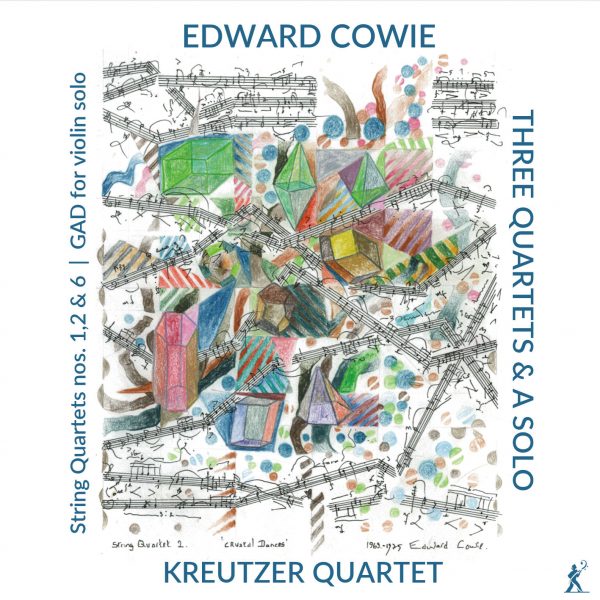British Music Society
Edward Cowie’s music operates on a multiplicity of levels, perhaps reflecting the composer’s background as a scientist, a visual artist, a violinist and an academic.
This comes through particularly in the first piece on the CD, his String Quartet No. 1 ‘Dungeness Nocturnes’, a quartet in one single movement.
Although the music is firmly on the atonal spectrum it has strong thematic development moved between the four instruments qualifying this as a proper quartet.
The Kreutzer Quartet are celebrated for their performances of music by ‘advanced’ contemporary composers and for this CD, they worked closely with the composer, making this a definitive performance of his music.
I have mentioned Cowie’s work as a visual artist and the booklet that accompanies the CD displays the composer’s pictures related to all three of the String Quartets. They are immediately attractive and appealing; however, the music requires more attentive listening.
Above the structural working-out of the First Quartet is its graphic and atmospheric qualities: the cries of sea birds, more importantly their movements, and the light and shade of the background. It is very filmic music.
String Quartet No. 2 is titled ‘Crystal Dances’. More fragmented, it suggests the joining together of the various facets of a crystal, but the second word ‘Dances’ is important too as expressed in Cowie’s powerful rhythmic writing. I imagine that this piece could work well as a modern ballet score.
String Quartet No. 6 is in four movements – Cowie’s personal atmospheric envisioning of the four seasons, each represented by winds coming from different directions. He starts with the West Wind for Autumn, then the North Wind for Winter, the East Wind for Spring and for Summer, the South Wind. All are powerfully atmospheric.
I especially liked Summer which recalled the instrumental writing in the final movement of Schoenberg’s Gurrelieder which also depicts the Summer Wind.
Peter Sheppard Skærved gives a stunning virtuoso performance of the piece for solo violin entitled GAD (Generalised Anxiety Disorder) from which the composer suffers occasionally. A descendant of J. S. Bach’s solo violin pieces it displays a host of violin technical fireworks and holds together particularly impressively in this performance.
@divineartrecordingsgroup
A First Inversion Company
Registered Office:
176-178 Pontefract Road, Cudworth, Barnsley S72 8BE
+44 1226 596703
Fort Worth, TX 76110
+1.682.233.4978












